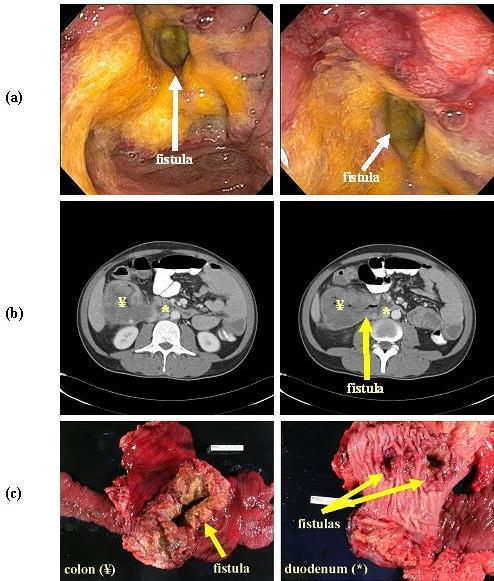Management and Outcomes of Primary Coloduodenal Fistulas
Ashwin S. Kamath*1, Corey W. Iqbal1, Tuan H. Pham1, Bruce G. Wolff2, Heidi Chua2, John H. Donohue1, Robert R. Cima2, Richard Devine2
1General Surgery, Mayo Clinic, Rochester MN, Rochester, MN; 2Colon and Rectal Surgery, Mayo Clinic, Rochester, MN
PURPOSE: Primary coloduodenal fistula (CDF) is a rare entity. We reviewed our experience with the management and outcomes of CDF. METHODS: This is a retrospective study from 1975-2005 of patients with primary CDF. Patients were followed through clinic visits and mail correspondence with a mean follow-up of 56 ± 14 mos. RESULTS: Twenty-two (22) patients at a mean age of 54 ± 3 yrs were diagnosed with primary CDF: benign (n=14) or malignant (n=8). Benign CDF were due to Crohn’s disease (n=9) or peptic ulcer disease (n=5), while malignant CDF was primarily due to colon cancer (n=7) plus one patient with lymphoma. Indications for operative intervention included intractable symptoms, gastrointestinal bleeding, and malignancy. Complete resection of malignant CDF with negative margins was achieved in half of patients after en bloc resection. Palliative bypass was performed in the remaining patients with unresectable disease. Thirteen patients with benign CDF had resection of the fistula which required a duodenal bypass procedure in 2. There were no perioperative deaths, and the morbidity rate was 38%. Median survival for patients with malignant CDF was 20 months (range 1-150 months). Two patients with malignant CDF had >5yr survival. All patients with benign CDF who underwent fistula resection had resolution of fistula-related symptoms with one recurrence. CONCLUSION: Benign CDF is amenable to operative therapy. Complete resection of malignant CDF can impart survival benefit and should be offered to patients.

Back to 2011 Program



